WelCom October 2023
The Most Reverend John Lewis Adams was ordained and installed as the third Bishop of Palmerston North in a vibrant and prayerful, 130-minute Mass on Saturday, 30 September 2023. Around 700 people attended the Mass in a crowded Cathedral of the Holy Spirit. Over a thousand more tuned in remotely to watch the livestream.
Eight bishops. present and retired. took part in the Mass with Bishop of Auckland Stephen Lowe as presider. Many of Bishop John’s friends and family members including his mother Joan were there, many having travelled from Christchurch, where he had been parish priest of St Peter Chanel Parish in North Canterbury.
Bishop John’s ordination marked the end of four years of Palmerston North Diocese being without a bishop, following the resignation of Bishop Charles Drennan on 4 October 2019.
‘It’s been a long journey,’ Bishop Lowe said in his welcoming remarks and turning to Apostolic Nuncio to New Zealand Archbishop Novatus Rugambwa with a smile, noted that the Diocese of Hamilton was waiting for a new bishop.
In his homily, Bishop Steve spoke of the significance of the Gospel reading that Bishop John had chosen (John 15: 9-17).
‘The words the Lord Jesus spoke to his disciples are rightly addressed to you, Bishop John, as you live out the command to love God, love neighbour and love self,’ he said.
Bishop Lowe said more than anything, a bishop was a man of prayer. New Zealand’s bishops were truly men of prayer, including Bishop-elect Adams.
‘Often as bishops we’re expected to be all things to all people. But we rapidly learn that we are called to be men of humility.
‘This is our task as bishops, in a world that is so fractured. To be a bishop is to love your brother priests, to love your people, the people that you serve as their shepherd. To be able to say, then I call you friends.’
During the Rite of Ordination, His Excellency Novatus Rugambwa read out the Apostolic Letter of Appointment, the official document from Pope Francis appointing John Adams as bishop and held it aloft.
Next came the Promise of the Elect, where Bishop John was questioned by Bishop Steve on his resolve to uphold the faith and to discharge his duty.
Afterwards Bishop John prostrated himself in front of the altar while the Litany of the Saints was sung, followed by the Laying on of Hands by his fellow bishops.
The open Book of the Gospels was then held over his head, to symbolise the primary duty of the bishop to preach the Gospel.
The final parts of the rite are the Anointing of the Head with holy chrism oil, the Investiture of the bishop’s ring, mitre and crozier, the Seating of the Bishop, where he is led to his Cathedra (Bishop’s chair), and the Kiss of Peace from all the bishops.
Towards the end of Mass, the newly ordained Bishop John approached the lectern for his address, resplendent in gold vestments and mitre, with a korowai from the Rangitāne people around his shoulders.
‘Becoming a bishop means I also inherit a new family, the priests and people of Palmerston North Diocese. The past few weeks have been a busy but hugely reassuring time for me due to the warmth of the welcome I have received. I want to thank you all for this.
Bishop Adams acknowledged the two retired Palmerston North bishops who had taken part in his ordination, Bishop Owen Dolan (coadjutor 1995–2004) and Bishop Peter Cullinane (1980–2012). This day of ordination was also Bishop Emeritus Dolan’s 95th birthday. He also thanked Msgr Brian Walsh and Fr Craig Butler who had acted as diocesan administrators while Palmerston North waited for a new bishop.
‘I want you to know that I’m confident in my ability to lead you in this task,’ he said. ‘My confidence should not be considered arrogant, for I’m confident not because of my abilities – surely they are modest – but I am confident because, with the Holy Spirit, as Luke’s gospel reminds us, anything is possible for God.’
He continued with an emotional tribute to his family, before going on to offer thanks to the people of Palmerston North who have been so welcoming, as well as friends and colleagues in Christchurch he has left behind.
‘As you might expect, a call from the Papal Nuncio brings a certain mixture of both honour and trepidation,’ he continued, speaking of the phone call he received with the news he’d been appointed Bishop of Palmerston North. ‘For me it came around the same time that I got the news that I would need to have open heart surgery. During that operation my heart was stopped for about ninety minutes.
‘“What is the Lord doing?” I remember asking myself, until I discovered that the word “Manawatū” means “to have a still heart”.’
Finally, he gave thanks to his fellow bishops.
‘I’ve already seen the multiple demands that you must bear behind the scenes. I look forward to working with you in the future and sharing something of that happy burden,’ he said.
Excited by that ‘Catholic breadth’
Michael Fitzsimons talks with the new bishop of Palmerston North about his dramatic conversion of the heart and his hopes for a church of urgency and vitality.
Bishop John Adams, the new 59-year-old bishop of Palmerston North, comes to the role with a vivid sense that God works in mysterious and at times deeply disturbing ways.
I ask him where it all began for him and he takes us way back:
‘I don’t mean to be taking the spiritual high ground straight away, but there’s a beautiful sense for all of us people of faith that we have been in the mind of God before the creation of the world. We are knit together in our mother’s womb, as the psalmist says. There’s something beautiful about that.’
Rather more immediately, Bishop John was the oldest child in the family. His father left school at the age of 12 because of financial pressure and shined shoes in Courtenay Place, Wellington. In time he became an excellent snooker player, becoming Wellington professional champion in his early 20s.
‘He went on to play snooker for New Zealand. He played Jimmy White in the first round of the 1980 world amateur championships, on live Australian TV. Dad won the first frame. There’s a little claim to fame for our family.’
His mother had quite a different trajectory in life. She spent five years training to be a religious sister and left just before final vows. She came to Wellington and met John’s father who was hustling snooker for a living, ‘winning and losing large amounts of money every day’.
Typical student
The family returned to Christchurch where John went to state primary schools and onto St Bede’s College. He drifted into Canterbury University, where he did a science degree based on subjects that didn’t have lectures on Mondays or Fridays! He enjoyed snooker, drank plenty of beer and led a typical student life. Science degree completed and not knowing what to do with his life, he headed to London in pursuit of adventure.
‘I travelled Europe extensively. I did parachute-jumping, sang for the London Choral Society and played a reasonable quality of cricket. I did a motor racing course at Brands Hatch. I arrived back in the mid 80s, still not knowing what on earth I was going to do with my life.’
After a stint working for a big manufacturer in Christchurch, he headed to Christchurch Teachers College. As a teacher, he discovered he had an aptitude for teaching in the special education field and ended up working with children with behavioural problems. His only significant connection with Church life at this time was as a member of the Catholic Cathedral Choir in Christchurch.
‘My love of the great choral tradition of the Catholic Church was developed there, but my faith remained tepid at that time. My primary motivation for attending Mass was my love of singing.’
All that however was about to change dramatically when he signed up for the Catholic summer school, Hearts Aflame, held at St Pat’s College Silverstream.
‘That was the year when I woke up mysteriously to my faith. I thought the Church was irrelevant, behind the times and somewhat dull. But after Hearts Aflame I realised that I was irrelevant, behind the times and dull. In fact the Church was very beautiful and she had something absolutely profound to say to the world. I really had an intellectual conversion at Hearts Aflame.
‘My life at that stage was going along a predictable path. I was going out with a nice girl, had just bought a house in Christchurch and had been offered a job promotion. But after Hearts Aflame, such was the power of my waking up that I realised I was going to give all that away and perhaps become a priest.’
Powerful conversion
‘It was a very strong conversion. I was as shocked as anyone. I had the unusual feeling that this was somewhat inevitable and yet I hadn’t chosen it.’
And so, led by an invisible hand, he found himself knocking on the door of Bishop John Cunneen. ‘All the priests I’d ever met seemed to be grumpy and unhappy people. And yet, there I was about to join them. I later came to learn that priests are in fact joyful and generous people.
‘Bishop John said, “why do you want to be a priest?” I said, “I don’t know, I’d rather get married and have children.” He sent me to a psychologist.
‘The psychologist said, what do you want to do with your life? I said, well, I guess I’ll get married, have children, I’ve got a house, I’m going out with a nice girl. I thought that was the answer for not going to the seminary but in fact it was the correct answer for going to the seminary. The best priests might make the best husbands and fathers. I hope that’s the case and so I found myself in the national seminary. That was my journey.’
Painful twists and turns lay ahead for the future priest and bishop. As it turned out, he did take on the role of tour manager for the choir and orchestra as the tour coincided with the seminary holidays. On tour ‘I met who I thought was the girl of my dreams. It was a marvellous time for me and I ended up coming back from that overseas tour, convinced that all along I’d been called to family life.’
He went to talk with Bishop Cunneen and together they decided that while his vocation was still an open question, he would go back to the seminary for six months and finish his theology degree.
‘I did a postgraduate degree in theology but during that six months my life turned to absolute custard. I couldn’t get out of bed in the morning, couldn’t go to sleep at night, couldn’t stand the company of other people, couldn’t stand my own company, stopped eating.
‘I was in no man’s land. Instead of going to spiritual direction once a month, I was going every week and crying like a baby. I was in a state of paralysis.’
It was in the midst of this crisis, in his fifth year at the seminary, that he realised he had never actually said ‘yes’ to God’s call, he had never actually responded.
‘I hadn’t made an act of the will, a classical insight from Thomas Aquinas. I hadn’t actually decided that this was actually what I was going to do, so everything fell apart that year.
‘When you are reduced to that sort of state – someone who’s reasonably confident and able – it is very humbling. Looking back on it, it was the best thing that could have happened to me. It wasn’t quite St Paul falling off his horse, but it was something like that.’
‘A beautiful, joyful life’
And so he stayed the course as a seminarian and spent a year with Fr Steve Lowe [now Bishop of Auckland] in Timaru. His faith strengthened and grew. He had a conversion of the heart, not just of the intellect, which led him to ordination day and ‘a beautiful, joyful life’ as a priest.
He has worked in a number of parish ministries in the Christchurch diocese. All the priests he has been put with have had a certain genius, he says. Parishes have included Riccarton Greymouth, Burnside, Papanui and most recently Rangiora.
‘My time at Rangiora has been a marvellous time of parish renewal. I think I’ve finally learnt what it is to be a leader. I’ve had some coaching in leadership and I’ve seen the possibilities of parish renewal. I’m really excited about it.’
So what model of leadership can we expect from the new bishop of Palmerston North?
‘A collaborative model of leadership,’ he says. ‘But the point I would make about collaborative leadership is it’s not about divesting oneself of the legitimate authority that’s been entrusted to you. It’s about recognising where your weaknesses are and operating out of the team.’
Priorities
And what are his priorities as Bishop?
‘At a fundamental level, to remind people that we are custodians of the greatest love story ever told and that ought to instil in us a certain joy and confidence. I think the Church in New Zealand lacks a certain confidence and it becomes a self-fulfilling prophecy.
‘The other thing I’m keen to explore in this diocese is the reality of parish renewal.
‘I see three keys to parish renewal. One – the primacy of evangelisation, the move away from a maintenance model to a missionary one. Two – greater docility to the Holy Spirit, greater acceptance of the charismatic nature of the Church. And three, let’s foster the best of leadership. Let’s seek out our leaders, let’s train them, let’s set them loose in the parish environment.
‘In the parish in Rangiora where I have been until a few weeks ago, we’re running leadership training for around 40 people. We’re spending our money on getting in professional leadership coaches. A parish with 10, 20, 30 leaders who want to do something great for the Church, that’s a great parish to be a priest in. That’s really exciting.
‘There are disappointments of course and mis-hits, you know. It’s a pretty toxic culture out there when you’re trying to spread the Gospel. I think I’m realistic about the reality of the mission fields.’
There’s no longer any space for lukewarm Catholicism, says Bishop John.
‘It’s got to be vital. It’s got to be fed out of the great spiritual traditions of the Church, which has watered the seeds of faith for 2,000 years. It also has to be a Church that’s reasonably clear and unafraid of its identity. Acquiescing to the culture is no answer – there are plenty of groups who have tried that and they’ve been decimated. So I’ve got no problem with the Church being distinctive.
‘I think we’ve been rather too captured by the thought of being relevant. The Church is in the world, but she’s not of the world. That’s a difficult dynamic, by the way. I’m not meaning to sound clichéd about it. I think the Church is in a transition from a rather untested Catholicism which has not stood up well to the rigours of modern society.
Apostolic age
‘The other thing I’d say is we’re now leaving the age of Christendom and we’re moving forward into an apostolic age where the Church is going to have to be more urgent.
‘I’ve been rather captured by the Divine Renovation movement which is about getting out there and preaching the Gospel. There are two great commissions of course. “Do this in memory of me” which I think, as best we can, we do adequately. But the other great commission is to go out and make disciples, baptising them in the name of the Father, Son and the Holy Spirit. I think we’ve been rather remiss there.
‘The last thing I want to concede to you, at heart I’m a conservative theologically. For instance, because of a pastoral situation in Christchurch a few years ago, I started saying the old Latin Mass. I’m not sure that this necessarily is the way of the future, but I discerned that there was a pastoral need there and I wanted to provide for and experience for myself that sense of continuity with the past.
‘So in my parish in Rangiora, once a fortnight we had the Latin Mass, and we also had charismatic praise and worship. I’m excited by that Catholic breadth.
‘The big word at the moment is inclusion, but it tends to only go one way. Traditional Catholics have a terrible time of it at the moment. There’s not much inclusion heading in that direction, it seems to me.
‘So that’s part of the recipe for the future. Let’s become truly Catholic again. Let’s be docile to the Holy Spirit. Let’s restore some of the beauty of the old liturgy. But let’s also be open to the charismatic gifts, prophecy, praying in tongues, words of knowledge, all those things. I don’t think it should be either or. We’ve been trapped into that thinking far too often.’
Read Bishop John Adam’s Reflection here.
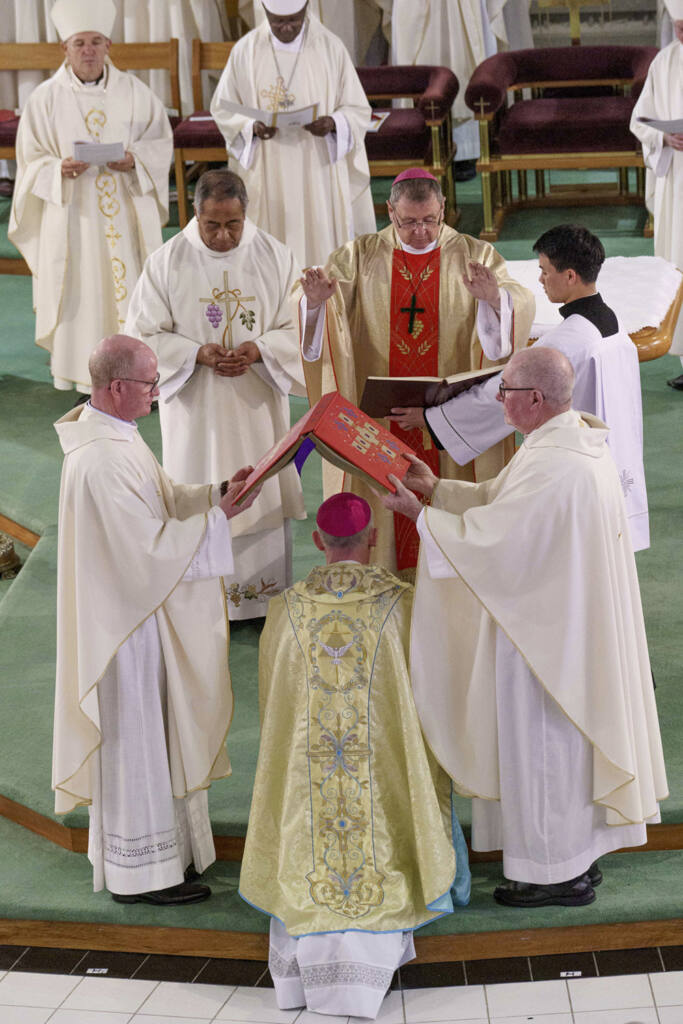
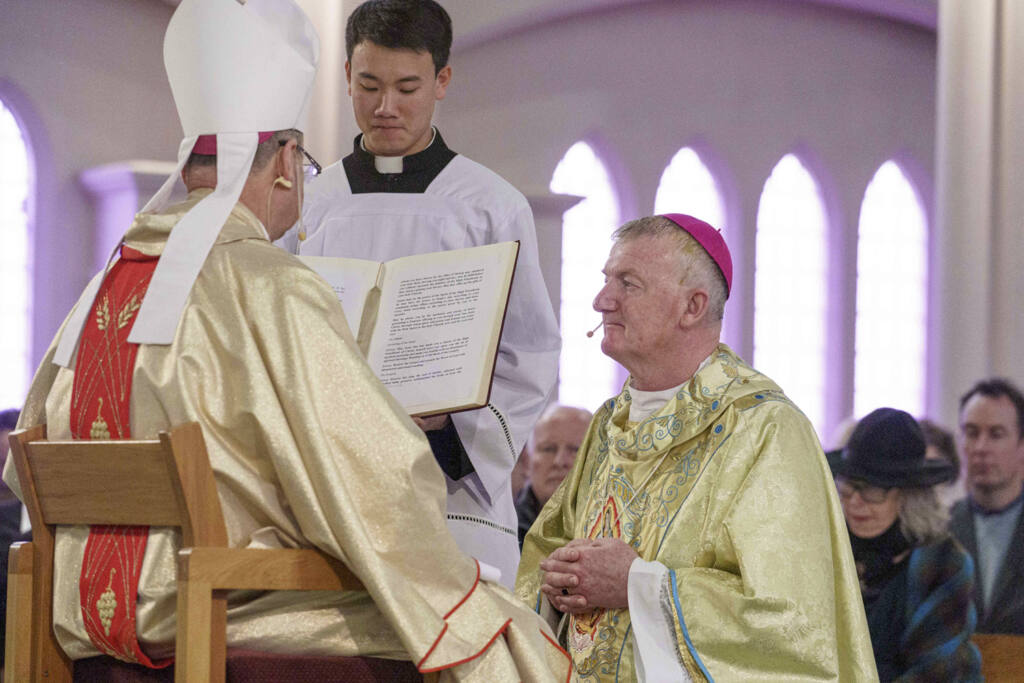
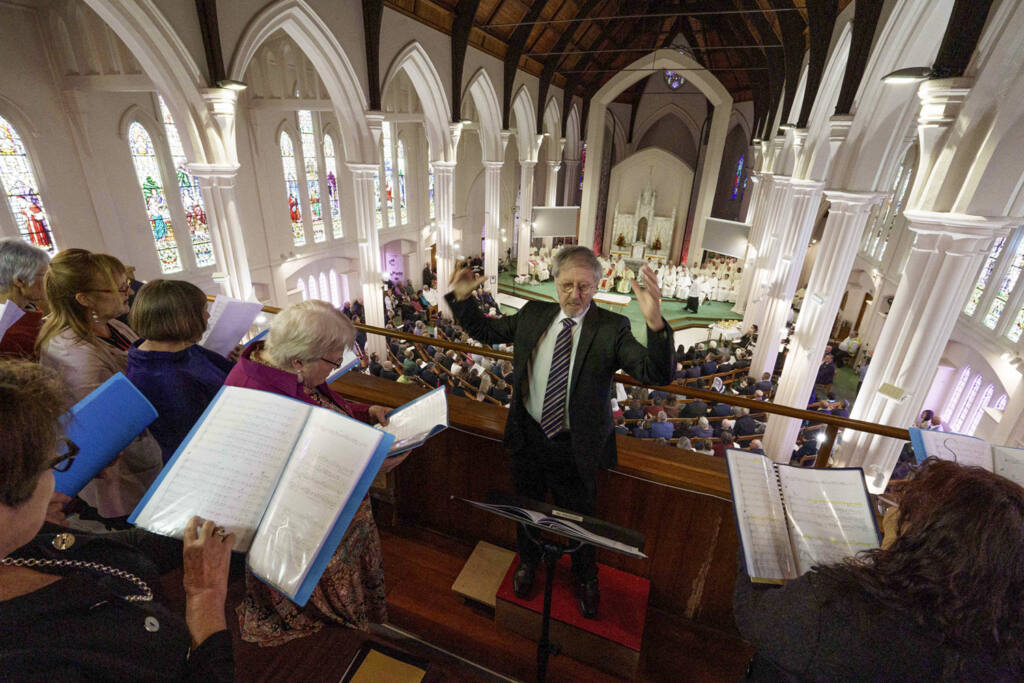
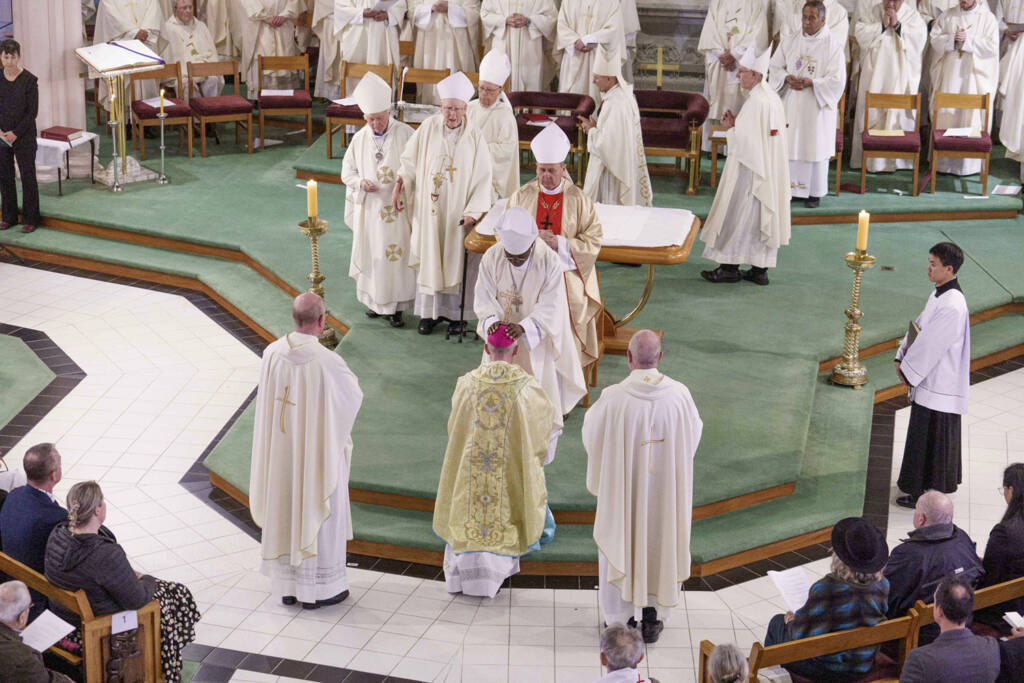
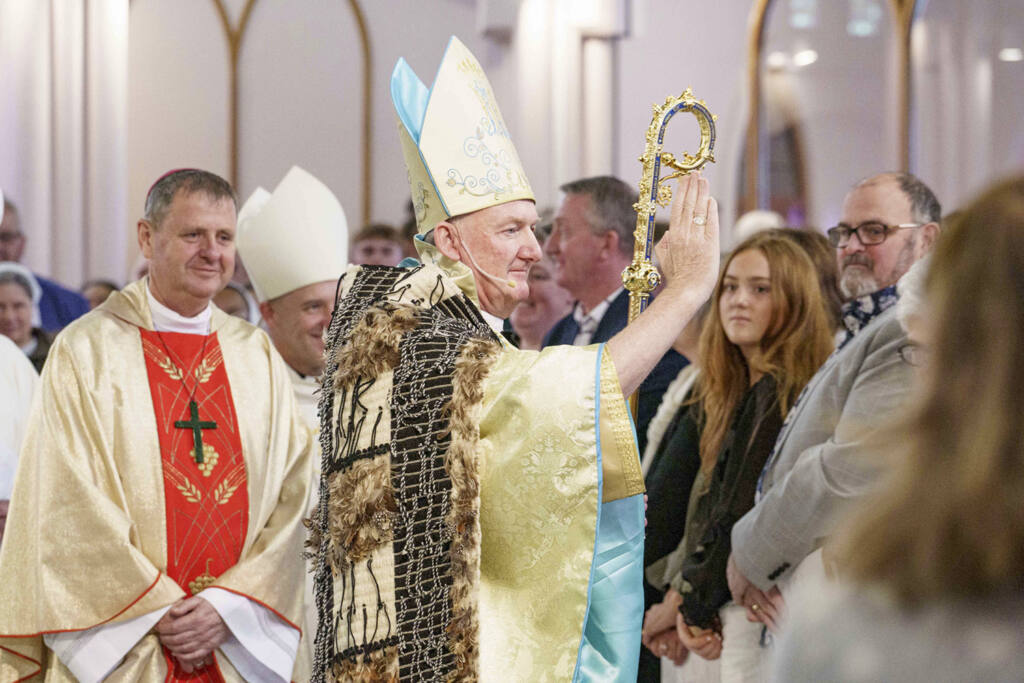
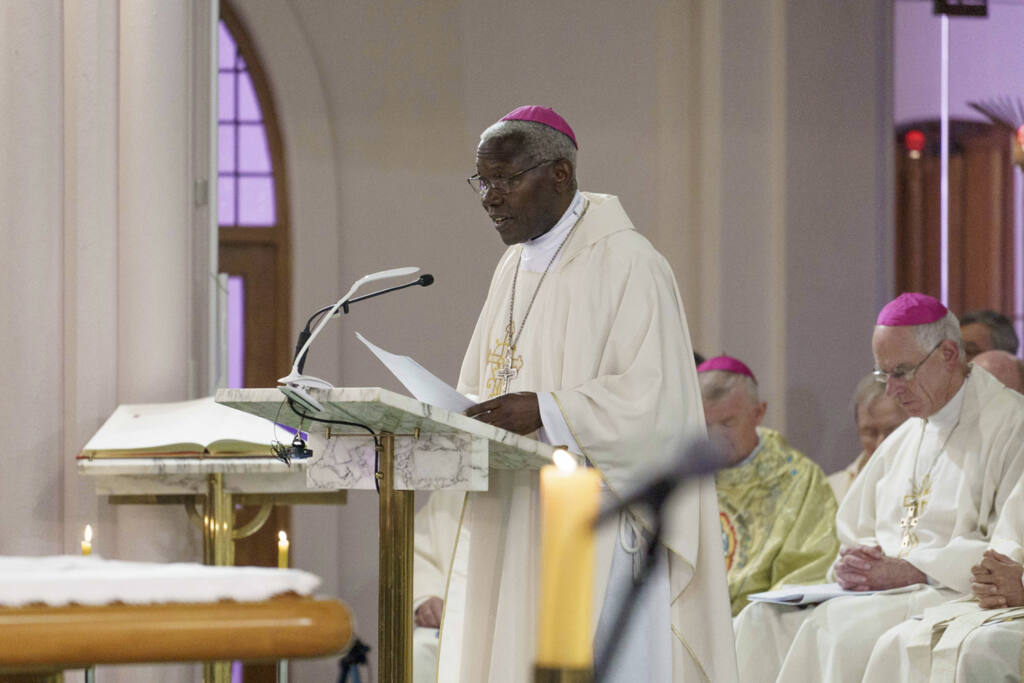
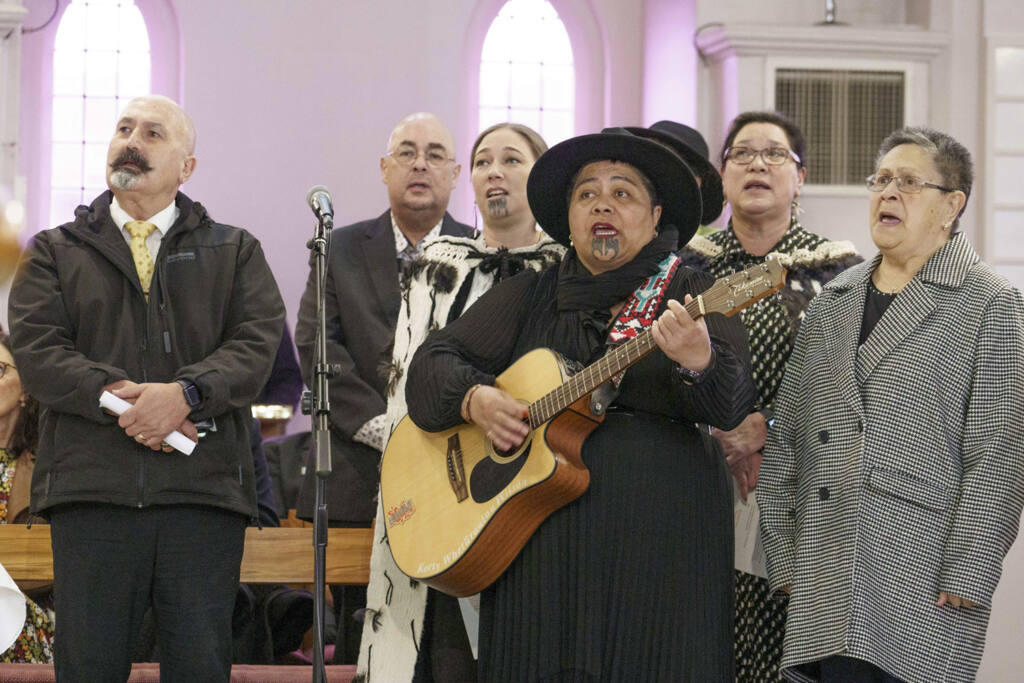
Photos: Brendan Lodge; Bernie Velasco; Annette Scullion